AccessComputing News - January 2015
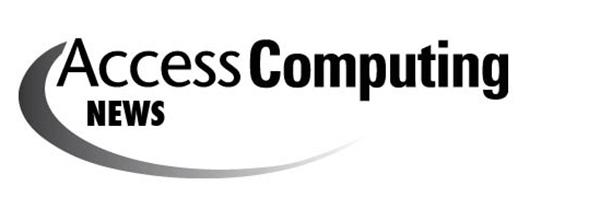
Below are the articles of the AccessComputing News - January 2015 newsletter. These articles can also be seen all on one page at the Full Newsletter option.
Lessons Learned in AccessComputing (AccessComputing News - January 2015)
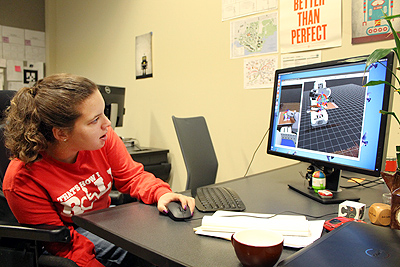
The UW has received NSF funding for three consecutive grants (CNS-0540615, CNS-0837508, and CNS-1042260) that support the nation-wide AccessComputing alliance. Project activities have led to sustainable structures and practices that make computing disciplines more welcoming and accessible to people with disabilities, including post-9/11 veterans. Project outcomes benefit society by making computing opportunities available to more citizens and by enhancing computing fields with the talents and perspectives of people with disabilities, as well as increasing participant success in college, graduate school, and careers.
Although project efforts are ongoing, it may be beneficial to others to share a few of the things we have learned thus far:
- Motivational activities can recruit students without initial interest, and comprehensive preparation and retention interventions produce more positive outcomes than isolated efforts.
- There is a need for more leaders and role models with disabilities in computing fields.
- The representation of students with disabilities in computing majors and degree completion decreases in higher education levels.
- Institutional change is needed to make computing departments both welcoming and accessible to students with disabilities.
- Change is needed to make IT positions in industry more welcoming and accessible.
- Cooperative efforts between organizations focused on computing and those focused on disability yields positive outcomes.
- New activities benefit from facilitiation by trained staff and funding for initial activities on which institutionalization of these practices can build.
- Students with disabilities face a variety of challenges when transitioning to higher levels of education, as evidenced by low success rates.
- K-12 schools and outreach programs need help in making computing classes more inclusive to students with disabilities. Mainstream computing courses rarely include accessibility/disability topics.
- Alliances for women and minorities are not always aware of how to effectively recruit and support participants with disabilities.
New Funding: AccessEngineering (AccessComputing News - January 2015)
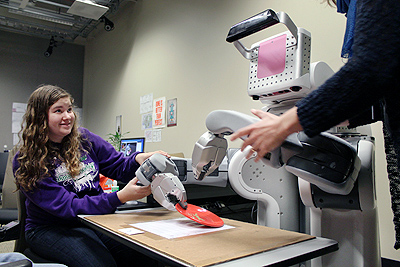
In Fall 2014, DO-IT and the UW College of Engineering were awarded a grant from NSF (#EEG-1444961) to fund AccessEngineering in order to help engineering faculty nationwide:
- Better serve a diverse student body that includes students with disabilities in engineering courses and programs, and
- Integrate relevant disability-related and universal design content into engineering courses.
The project aims to increase the participation of people with disabilities in engineering education and careers, where they can improve engineering fields with their perspectives and expertise.
The project is funded under NSF’s Broadening Participation in Engineering Strategy Track for $836,435 over the course of three years, beginning September 15, 2014. Sheryl Burgstahler is the Principle Investigator (PI) for the project. Two UW faculty members, Maya Cakmak, assistant professor in Computer Science and Engineering, and Katherine Steele, assistant professor in Mechanical Engineering, are Co-PIs. Fourteen representatives from universities nationwide, including AccessComputing PI Richard Ladner, will serve on the Faculty Leadership Team. Project leaders are looking forward to our first Capacity Building Institute with faculty members and other stakeholders, which will be held in April 2015.
For more information, visit the AccessEngineering website at www.uw.edu/doit/programs/accessengineering/overview or email doit@uw.edu for more information.
In Fall 2014, DO-IT and the UW College of Engineering were awarded a grant from NSF (#EEG-1444961) to fund AccessEngineering in order to help engineering faculty nationwide:
- Better serve a diverse student body that includes students with disabilities in engineering courses and programs, and
- Integrate relevant disability-related and universal design content into engineering courses.
The project aims to increase the participation of people with disabilities in engineering education and careers, where they can improve engineering fields with their perspectives and expertise.
The project is funded under NSF’s Broadening Participation in Engineering Strategy Track for $836,435 over the course of three years, beginning September 15, 2014. Sheryl Burgstahler is the Principle Investigator (PI) for the project. Two UW faculty members, Maya Cakmak, assistant professor in Computer Science and Engineering, and Katherine Steele, assistant professor in Mechanical Engineering, are Co-PIs. Fourteen representatives from universities nationwide, including AccessComputing PI Richard Ladner, will serve on the Faculty Leadership Team. Project leaders are looking forward to our first Capacity Building Institute with faculty members and other stakeholders, which will be held in April 2015.
For more information, visit the AccessEngineering website at www.uw.edu/doit/programs/accessengineering/overview or email doit@uw.edu for more information.
Attending Conferences via Robots (AccessComputing News - January 2015)
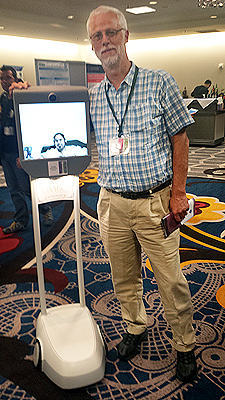
Attending the 2014 ACM International Joint Conference on Pervasive and Ubiquitous Computing (UbiComp 2014) in Seattle, Washington via the Beam Telepresence Robot was an exceptional and memorable experience. Although I was unable to attend the conference in person, I participated in a user study, which provided me the opportunity to attend and interact with other attendees remotely. The telepresence initiative user study was organized by the Co-Chairs Dr. Carman Neustaedter, from Simon Fraser University in Canada, and Gina Venolia, from Microsoft Research.
The Beam robot, created by Suitable Technologies, allowed me to have mobility by using a wheeled battery powered device with voice conferencing and telepresence capabilities. The Beam includes two wide-angle cameras, a six-microphone array with echo-canceling and noise reduction, a seventeen inch LCD screen, an eight hour-battery, two dual-band radios providing Internet connectivity, a built-in speaker coupled to a mobile platform. The Beam has great maneuverability and can be driven using a mouse, keyboard, or Xbox controller. Participants were also given the option to personalize their Beam robot with a label that displayed their name and contact information.
I had the opportunity to meet amazing researchers from across the country as well as individuals from China, England, Sweden, and Italy and engage in discussions about varied and interesting research projects as a bridge to meaningful mentorship and guidance. Although I have spoken with Dr. Richard Ladner via phone, Skype, and email for over 10 years, it was exciting and gratifying to meet him for the first time physically, albeit in virtual space thanks to the Beam robot.
Using the Beam robot provided a sense of dynamic and real-time presence in the actual conference environment. It was great to be able to join discussions after the presentations, and I enjoyed having autonomy and independence while driving and operating the Beam robot.
Nevertheless, the experience wasn’t perfect. I would often lose Internet connection inside the elevator and between presentation sessions. Other challenges included audio and video problems. For example, feedback from my microphone caused disturbances in the sound quality, so I had to frequently adjust the volume on the microphone. Although I felt totally immersed and connected at the sessions of the conference, I had a sort of “jet-lag” because of the time difference between Maryland and Seattle, and I felt a sense of disconnect because of the differences between my home and the conference site.
I look forward to attending future conferences using the Beam robot or similar technology. In fact, as a result of the UbiComp 2014 conference experience, I was able to work with AccessComputing to remotely attend the International ACM SIGACCESS Conference on Computers and Accessibility (ASSETS), which was held in Rochester, NY using a Beam robot. For someone who is unable to travel to professional conferences, these two experiences were unparalleled.
Empowering Blind Students in Science and Engineering (AccessComputing News - January 2015)
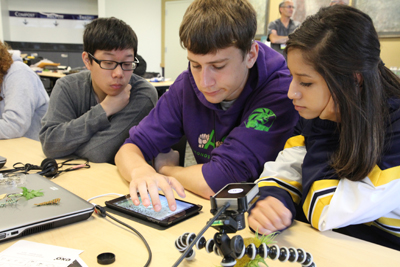
The Empowering Blind Students in Science and Engineering (EBSSE) workshop was held June 1-3, 2014 at a conference center near the UW. The workshop brought together three different groups of people to foster mentoring and networking among blind students studying science, technology, engineering, and mathematics (STEM). The first group consisted of eighteen blind students in STEM fields who came from seventeen universities and one high school in twelve different states. The second group consisted of sixteen blind mentors, some with PhDs, who are successful blind professionals working in STEM fields. The third group consisted of eight local leaders in industry, education, and government who attended for various lengths of time. The leaders participated in mentoring and listened to the successes and challenges of the blind students and mentors. A total of forty-four people, thirty-five of whom were blind, participated in the workshop.
The workshop consisted of structured plenary sessions, contemplative sessions directed by a professional in contemplative practices, and semi-structured breakout sessions based on academic and professional interests. One of the plenary sessions featured Dr. Nicholas Giudice, Associate Professor at the University of Maine, who presented his work on how blind people perceive various stimuli and his contributions to tactile graphics research. Sina Bahram, graduate student in computer science at North Carolina State, presented ways to grow one’s personal brand through the use of social media and the internet, important for networking and professional development. Dr. Daehee Lee gave a talk about his career as a Natural Language Processing Research Engineer for Nuance Communications, Inc. Shiri Azenkot, now an Assistant Professor at Cornell Tech in New York City, presented strategies for giving an effective presentation.
The breakout sessions in computer science were very popular among students learning about both accessible programming environments and about ways to generate accessible PDF files. An example of a contemplative activity was a “Just Like Me” session. This session allowed attendees to empathize with a partner silently to recognize everyone’s similarities in having positive and negative feelings, emotions, and experiences. This activity was particularly salient to educating the sighted leaders that blindness is not a defining characteristic.
The major funding for the workshop came from the Fetzer Institute in Kalamazoo, Michigan. The program manager for the workshop was Cynthia Bennett, AccessComputing Team member.
AccessComputing Student Profile: Daniel Seita (AccessComputing News - January 2015)
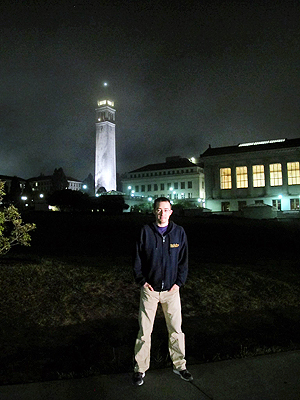
My name is Daniel Seita, and I am a first-year computer science PhD student at the University of California, Berkeley. I am working with Professor John Canny on machine learning and human-computer interaction research. I expect to stay at Berkeley for at least six years to form a strong research record before going out on the job market. My career goals are to become either a professor or a research scientist.
In retrospect, I am surprised at my life’s journey so far, as I had long viewed myself as a future doctor or lawyer. It was not until after I had attended AccessComputing’s Summer Academy for Advancing Deaf and Hard of Hearing in Computing in 2011 that I seriously considered a career in computer science.
My experience at the Summer Academy, where I was surrounded by talented deaf students and did not have to worry much about communication, provided a welcome social change from college. I attended Williams College from 2010 to 2014 and was its first (and only) deaf student. Throughout my years at Williams, they provided me with excellent interpreting and note-taking services for my classes. The computer science professors were also friendly and supportive. In the summers after the Summer Academy, I participated in two NSF-funded Research Experiences for Undergraduates, which, along with my academic record, helped me get in Berkeley’s PhD program.
Every now and then, I think about how unbelievable it is that I got to where I am today. My journey into the world of computer science would not have been possible without all the help and support I’ve received in my years of school. My support network includes all my interpreters, my note-takers, deaf teachers and assistants, AccessComputing, and of course, my parents. From elementary, middle, and high school at Guilderland, to four years at Williams, and now at Berkeley, they have remained my strongest supporters.
Our Quest for an Accessible Web Conferencing System (AccessComputing News - January 2015)
AccessComputing regularly hosts meetings with its partners, and traditionally these meetings have been conducted via voice-only teleconference. However, we acknowledge that there are shortcomings with this medium. For example, participants who are deaf or hard of hearing must participate through a relay operator, which introduces a lag time in the communication, can be confusing when multiple speakers are engaged in conversation, and is generally difficult for deaf and hard of hearing individuals to actively participate in the conversation.
Also, a great deal of communication occurs non-verbally, and voice-only meetings lack the non-verbal part of speakers’ messages. Many people find that having a face-to-face conversation is simply more engaging than meeting solely by voice.
Given the limitations of voice-only teleconferencing, we spent time in 2014 exploring available options for web conferencing systems. Our partners are diverse, and include people who are deaf or hard of hearing, people who are blind, and people who are physically unable to use a mouse, among others. Each of these groups of participants has unique interface needs that must be taken into consideration. The following is a summary of our requirements for a web conferencing system:
- Video quality and performance must be sufficient to support sign language. Our goal was to replace relay operators with a single sign language interpreter that could be shared in a window by multiple participants. The interpreter window must be resizable independently of the speaker window. This would allow users to have both the speaker and the interpreter in relatively large windows compared to other participants. Many web conferencing tools show all participants in small windows, and only one participant at a time can be promoted into a large window. The ideal product would at least allow two relatively large windows, and ideally users would have flexible control of those windows, and could resize and position them individually as needed.
- The product’s controls must be accessible by keyboard, without requiring a mouse. Most web conferencing systems have a variety of features that appear in different panes. Keyboard users must be able to easily navigate between those panes and use all the features.
- The product’s controls must be accessible to screen reader users. The panes and controls must be sufficiently labeled so blind users know where they are within the interface, and can easily navigate to particular features and use those features.
- The product’s interface must be customizable. Individuals using screen magnification software may find it difficult to navigate if their screens are cluttered with information. This can also be distracting for many other users. Flexibility is an important aspect of universal design.
- The product must be easy for everyone to install and use. As hosts, we at AccessComputing would expect to cover any costs, and our remote users could simply login and use the system without having to purchase software or install plugins, especially those that are dependent on other software being installed first. The more steps required of users for getting up and running, the more likely we are to lose potential participants if they encounter technical difficulties.
We solicited feedback from colleagues, many of whom had undergone similar quests. This helped us to narrow our focus, as there are a multitude of products out there. Christian Vogler, Paula Tucker, and Norman Williams of Gallaudet University had conducted a similar quest, focused specifically on the deaf and hard of hearing perspective, and presented their research at ASSETS ‘13, which can be found at http://dl.acm.org/citation.cfm?id=2517035.
However, we were ultimately unable to find a single web conferencing system that met all of our requirements. Some systems were relatively strong on customizability, including the ability to independently resize speaker windows; however these products were not accessible for keyboard or screen reader users. Other systems excelled at keyboard and screen reader accessibility, but failed to meet our needs for having both a speaker and interpreter in large windows. Other systems had excellent video quality but failed in other areas.
As of the date of this newsletter, we continue to host our meetings via voice-only teleconference. Rather than actively searching for a replacement, we are now actively working to ensure our meetings are as accessible as possible within this medium. Here are a few of the steps we are taking to ensure the accessibility of our meetings:
- We ask all participants to state their name and institution each time they speak. This helps all participants, but especially deaf and hard of hearing participants, since their relay operators aren’t likely to recognize speakers by their voices.
- We ask all participants to limit the background noise as much as possible so that everyone can clearly hear the person who is speaking. With each invitation, we include a list of the touchtone controls for muting and unmuting, and for increasing or decreasing volume of audio.
- We include a statement in each meeting invitation that invites participants to contact us if they require any disability-related accommodations, and include a specific email address to contact.
We will continue to monitor the web conferencing system landscape and will reach out to vendors in hopes of persuading them to more fully build accessibility into their products. There is clearly a need for such a system, and we look forward to doing business with the first vendor that satisfies that need.
ASSETS 2014 (AccessComputing News - January 2015)
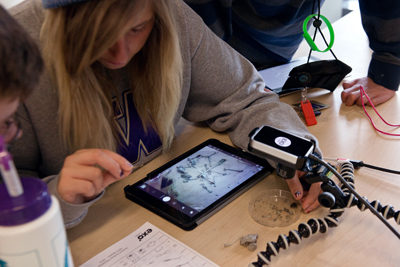
I had the privilege of attending the 16th International ACM SIGACCESS Conference on Computers and Accessibility (ASSETS 2014), which was held in Rochester, New York, on October 20-22. It was a remarkable conference in a number of ways. There were about 170 attendees, which may be a record attendance for the conference. The technical program was excellent with interesting talks, many poster and demos, and a reception with technical exhibits at the National Technical Institute for the Deaf at Rochester Institute of Technology. The 2014 SIGACCESS Award for Outstanding Contributions to Computing and Accessibility was awarded to Vicki Hanson who gave a fascinating talk titled “Computing and Humans,” which highlighted the impact of technology on people with disabilities.
Two attendees attended using Beam telepresence robots (see the related story by one of these participants one pages 3-4). There was both captioning and sign language interpretation for the deaf attendees. Most of the presenters made their talks accessible to those attendees who are blind or have low vision. In addition to the two Beam attendees, I counted twelve attendees who were blind or have low vision, four deaf attendees, and two who were in wheelchairs. There were others who attended with less visible disabilities. There were at least nine authors with disabilities and was heartening to see that six of the nine had some connection to AccessComputing. There were two talks given by blind authors and two by deaf authors.
Of all the ASSETS conferences I have attended, I feel this one had the most participation by researchers with disabilities. It will be interesting to see if this level of participation continues at the next ASSETS conference that will be held in Lisbon, Portugal.
Capacity Building Award: Jonathan Lazar (AccessComputing News - January 2015)

Jonathan Lazar; professor of computer and information sciences, director of the Undergraduate Program in Information Systems and director of the Universal Usability Laboratory at Towson University, earned AccessComputing’s Capacity Building Award.
Jonathan engages in teaching and research in the area of human-computer interaction, specifically, web usability, web accessibility for people with disabilities, user-centered design methods, assistive technology, and public policy in the area of human-computer interaction. He is actively involved with SIGCHI, serving as the digital accessibility chair for the CHI conference in 2014. He engaged with AccessComputing leaders to ensure that SIGCHI and its activities are accessible and welcoming to people with disabilities. Jonathan has encouraged other AccessComputing partners to engage with the SIGCHI Accessibility Community.
Learn more about SIGCHI efforts to increase accessibility in their organization and at their annual meeting at www.washington.edu/doit/articles?540.
New Funding: AccessCSForAll (AccessComputing News - January 2015)
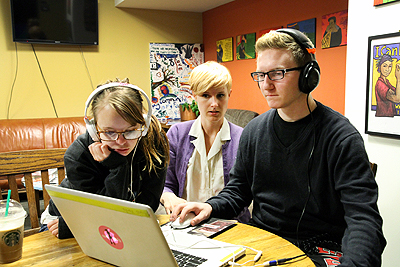
AccessCSForAll (#CNS-1440843) is a new NSF-funded program with the goal of increasing the participation of students with disabilities in Exploring Computer Science (ECS) and Computer Science Principles (CSP). It is a collaborative effort of the UW with PI Richard Ladner and Co-PI Sheryl Burgstahler and the University of Nevada, Las Vegas, with PI Andreas Stefik. There are two principal objectives to reach our goal:
- Build the capacity of ECS and CSP teachers to serve students with disabilities through professional development training and individualized real-time support.
- Create accessible materials that ECS and CSP teachers can use in their classrooms, both tools and curricular units.
We are partnering with as many NSF funded CS10K projects as possible to help them include information about how teachers can engage students with disabilities in there ECS and CSP classes. We will have capacity building institutes for the professional development trainers in these projects, the first of which was held in conjunction with NSF’sCE21 meeting in Baltimore in January 2015. We will also develop an online community of practice for discussing effective teaching of students with disabilities and accessible tools and curriculum. A key activity is real time support for teachers to help them solve problems related to including students with disabilities in their classes.
The grant also provides for the development of accessible tools and curriculum to make sure that there are languages, IDEs, and lessons for teacher to include students with disabilities in their classes. For blind students we will provide curricula based on the Quorum language that can be accessed using screen readers. This curriculum will be universally designed so that all children can participate regardless of disability.
Besides the capacity building workshop at the CE21 meeting, we will be offering a special session (75 minutes) titled “Introduction to AccessCSForAll and Accessible Tools for Teaching Programming” at the SIGCSE conference, March 4-7, 2015.
Over the summer and early fall, Andy Stefik and his team created an accessible Hour of Code for CS Education Week, December 8-14, 2014. It is a fun activity in the Quorum programming related to biology.
For those of you involved with K-12 CS Education, particularly the ECS and CSP curricula, keep a lookout for AccessCSForAll activities that interest you.
Call for Promising Practices: Integrating Universal Design into Curriculum (AccessComputing News - January 2015)
In the January 2014 issue of AccessComputing News, we reported on a variety of efforts to integrate universal design into curriculum, which was the theme of the 2013 Accessing Higher Ground conference (www.uw.edu/accesscomputing/get-informed/publications/accesscomputing-news-january-2014/universal-design-curriculum-key-focus-accessing-higher-ground).
One of our own contributions in this space has been WebD2, a web design and development course curriculum designed primarily for use in secondary schools. It is a full course curriculum in which students learn about the importance of web standards and accessible design. These concepts are taught as core design principles in the first unit, and then reinforced throughout the course as students learn new topics.
The curriculum is available for free at www.uw.edu/accesscomputing/webd2 and currently has over 5000 registered teachers worldwide.
In 2014, we conducted a survey of teachers who are using the curriculum, and 147 teachers responded. Among other questions, teachers were asked to rate the following two statements on a five-point scale:
- As a result of using the curriculum, I now have more knowledge about standards-based and accessible web design.
- As a result of using the curriculum, most of my students now have more knowledge about standards-based and accessible web design.
The mean rating for each of these statements was 4.3. We’re excited to know that by teaching universal design within the course curriculum, we are not only influencing students, but also on teachers, who will continue to share their new perspective with countless other students in the future.
Many of the teachers who participated shared stories of their students who had gone on to pursue web design and development or other computing-related career paths after taking the course. There were stories of students who are now working as graphic artists or web developers, and others who are pursuing academic degrees in computer science and engineering. It’s exciting to hear these stories knowing that these students, who will be the architects of our future world, will be approaching their work with a foundation of knowledge that includes universal design and accessibility.
We are interested in learning about other efforts to integrate accessibility into curriculum. If you have engaged with activities in this area, please contact us at accesscomp@uw.edu.
Accessible Hour of Code (AccessComputing News - January 2015)
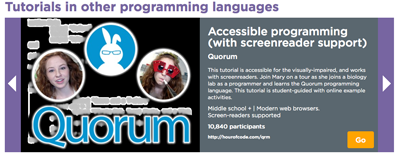
Last December, students participating in code.org’s Hour of Code could choose an accessible tutorial for the first time. Hour of Code is designed to provide a short introduction to programming to K-12 students and has had millions of participants since 2013. This year, the Hour of Code included a tutorial that utilizes the programming language Quorum. The tutorial is accessible for the visually-impaired and works with screenreaders.
By the end of Computer Science Education Week in December, over 7500 participants had completed the Quorum Hour of Code. Find the tutorial online at hourofcode.com/qrm.
The AccessComputing Knowledge Base (AccessComputing News - January 2015)
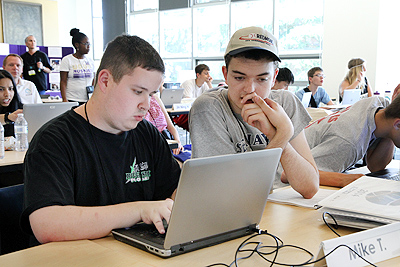
Did you know that the searchable AccessComputing Knowledge Base includes over 480 articles each as a questions and answer (FAQ), case study, or promising practice? These short articles are used to increase the capacity of postsecondary institutions, precollege educators, projects that broaden participation in computing, and industry to fully include individuals with disabilities in computing fields.
Hot topics in the Knowledge Base include:
- What are typical accommodations for students with ADHD?
- The Summer Academy for Advancing Deaf and Hard of Hearing in Computing: A Promising Practice for Encouraging Students To Study Computing in College
- What is the difference between open and closed captioning?
- What is the difference between the W3C guidelines and the Section 508 standards for web accessibility?
- Universally Designed Web Pages: A Case Study on Access Issues for a Student with a Learning Disability
- What are specific computer applications that can assist students with learning disabilities?
- How can I make my computing department more accessible to students with disabilities?
- What are the NIMAS Development and Technical Assistance Centers? DO-IT: A Promising Practice in Designing Accessible Videos
- Are there any web-based tutorials on web accessibility?
The Knowledge Base can be found at www.uw.edu/accesscomputing/search-accesscomputing-knowledge-base. The Knowledge Base is an ever evolving collection. Articles we expect to add in early 2015 include an FAQ on how to include individuals with disability into broadening participation activities for women or under-represented minorities, a case study about attending conferences via robots, and a promising practice on how to host a collaborative meeting.
If you have ideas or suggestions for new content to include in the Knowledge Base simply email us at accesscomp@uw.edu.
AccessComputing Resources (AccessComputing News - January 2015)
Website
Connect to AccessComputing project information, resources, and materials.
Knowledge Base
www.uw.edu/accesscomputing/kb.html
Consult Q&As, case studies, and promising practices regarding universal design of instruction; strategies for making computing curricula, classes, labs, and careers accessible; and accessible technology for people with disabilities.
Videos
www.washington.edu/doit/videos/index.php
Open-captioned and audio-described videos are available freely online for streaming or download and DVDs are also available for purchase.
Publications
www.washington.edu/doit/resources
Publications are available online or in print format for free or low cost.
About AccessComputing (AccessComputing News - January 2015)
Led by the Department of Computer Science & Engineering and DO-IT (Disabilities, Opportunities, Internetworking, and Technology) at the University of Washington, AccessComputing is supported by the National Science Foundation (Grant No. CNS-0540615, CNS-0837508, and CNS-1042260). Any opinions, findings, and conclusions or recommendations expressed in this material are those of the authors and do not necessarily reflect the views of the National Science Foundation. For further information, to be placed on the mailing list or to request materials in an alternate format, contact:
University of Washington
Box 354842
Seattle, WA 98195-4842
accesscomp@uw.edu
www.uw.edu/accesscomputing/
206-221-4171 (Fax)
206-685-DOIT (3648) (voice/TTY)
888-972-DOIT (3648) (toll free voice/TTY)
509-328-9331 (voice/TTY) Spokane
Dr. Richard Ladner, PI
Sheryl Burgstahler, Co-PI